Kevin O’Meara (b. 1987) is a photographer and fine artist Minneapolis, Minnesota. He is largely self-taught, picking up information through his grandfather, a lifelong NPPA photographer, and through conversation with other artists. He has shown work in Minneapolis, Chicago, and Los Angeles and has published multiple photo books. Today we are going to dive into one of Kevin’s more recent bodies of work entitled Second Best. Kevin sought out to document the experience of the second-largest state fair in the country while exploring the idea of regionalism as a sense of entitlement. There is contrast and a dual sense of superiority from both sides of the experience; the tourists watching this simple manner of living and those invested in competition and being the best.

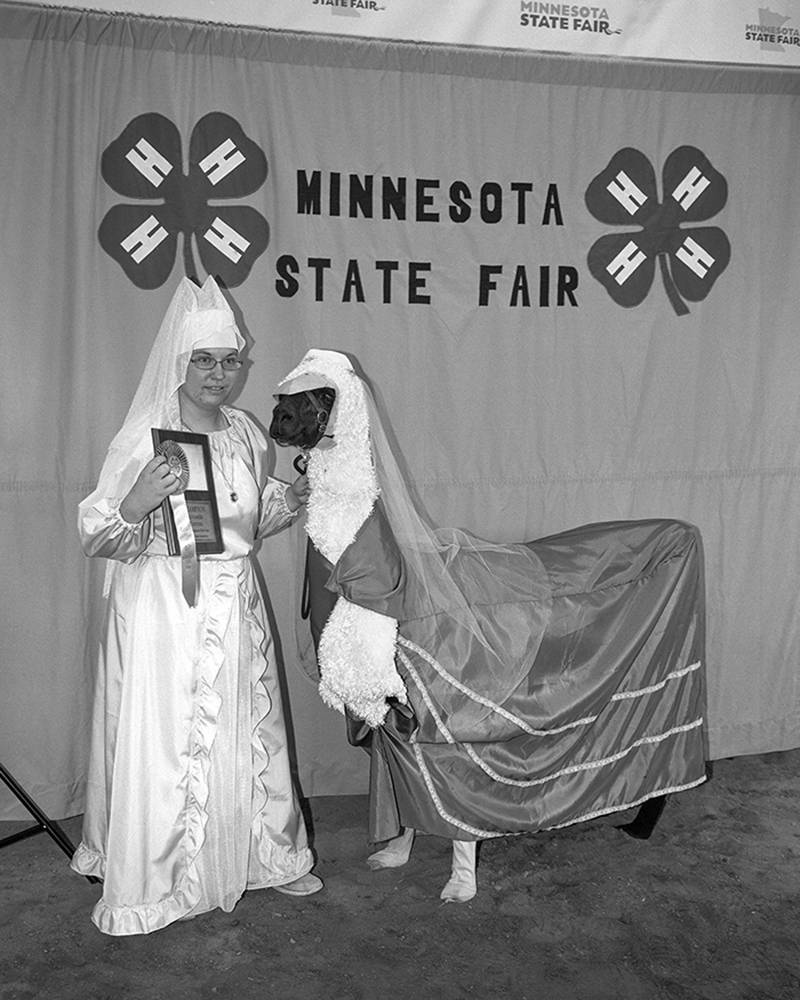
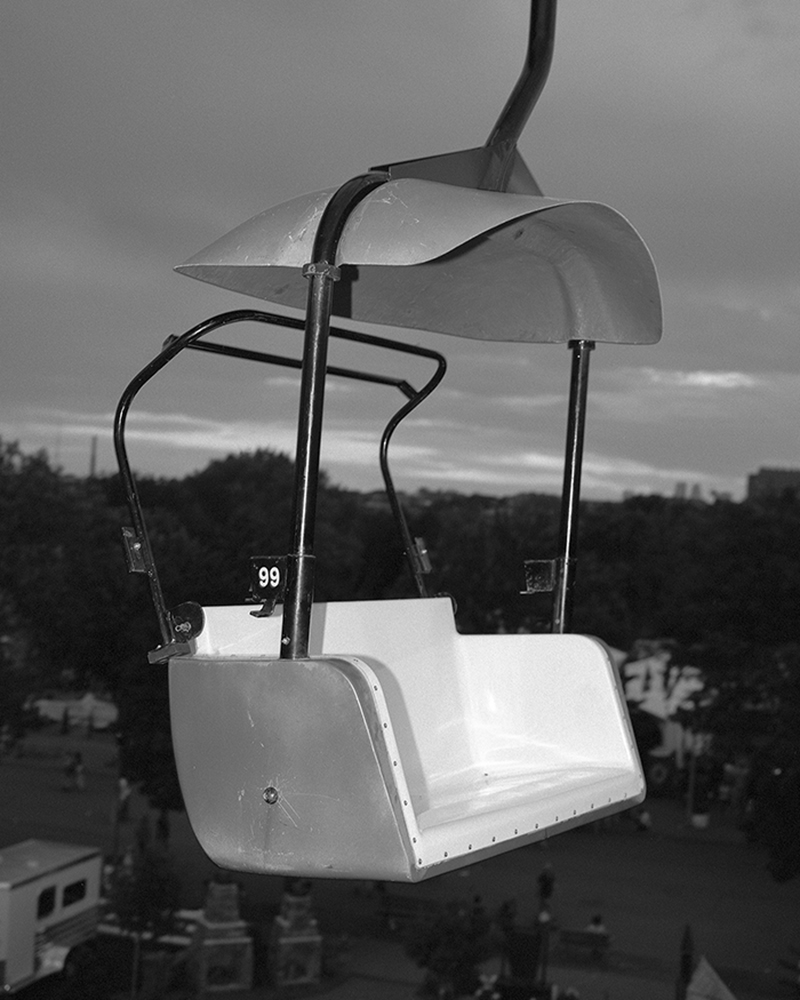
Thanks for taking the time to speak with us about Second Best. Why don’t you give us a little background info on this body of work.
From 2012-2014 I was working in a school and had 24-hour access to a darkroom. In 2014, my job disappeared and with it, the darkroom. Up until this point I had been shooting a lot of what others would probably call street photography, and I look at it now as a lot of practice. I had been practicing a lot. I knew a couple guys in town that knew this guy Tom Arndt who is a master printer with a studio. He put out a book called Home that had photos from the state fair in it, and I figured I should meet him half-way if I’m going to try and see if I can get access to his darkroom. So I settled on the state fair. It wasn’t wildly conceptual when I started but I knew if I spent a lot of time on the grounds, there would be something that would emerge from it.
I decided to shoot the fair and give it 100%. That meant all twelve days. That meant I would have to buy admission and that was a lot for me. There is a woman here in town that was familiar with my work and I pitched it to one of her friends that I met on a shoot and she was excited about it. I agreed to give her work in return for buying my admission for the fair and that’s how it started. So the week before the fair I got my twelve tickets and I was set. I just had to buy a bunch of film and not sleep.
It was a very isolative experience. My friends would come with, but I wouldn’t talk much, or I’d be kind of vacant, and what I found was there was this really strange dynamic between the two different populations; the city slickers spectating this simple way of life, public animal birth, freakishly large farm animals, freakishly obese humans, and the rural population walking with their chin held high, proud of their accomplishments and growth since the previous fair.
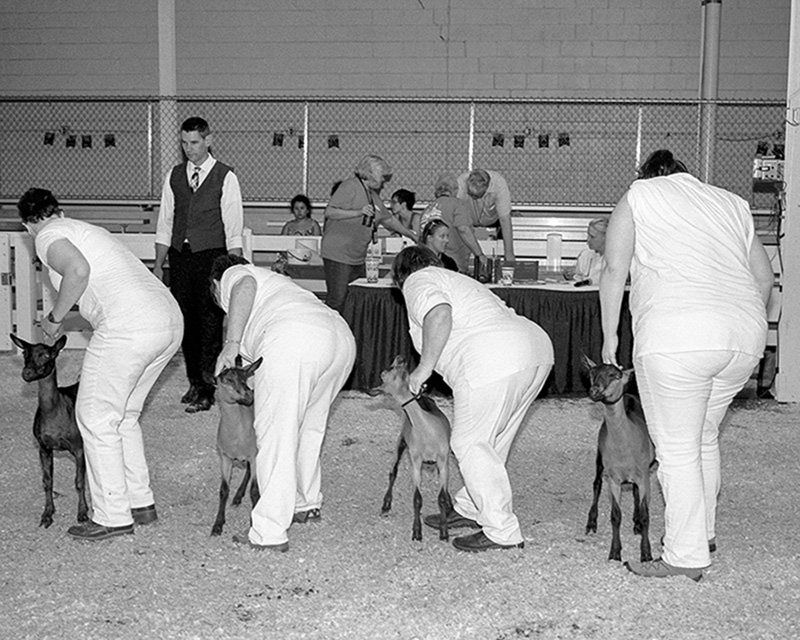
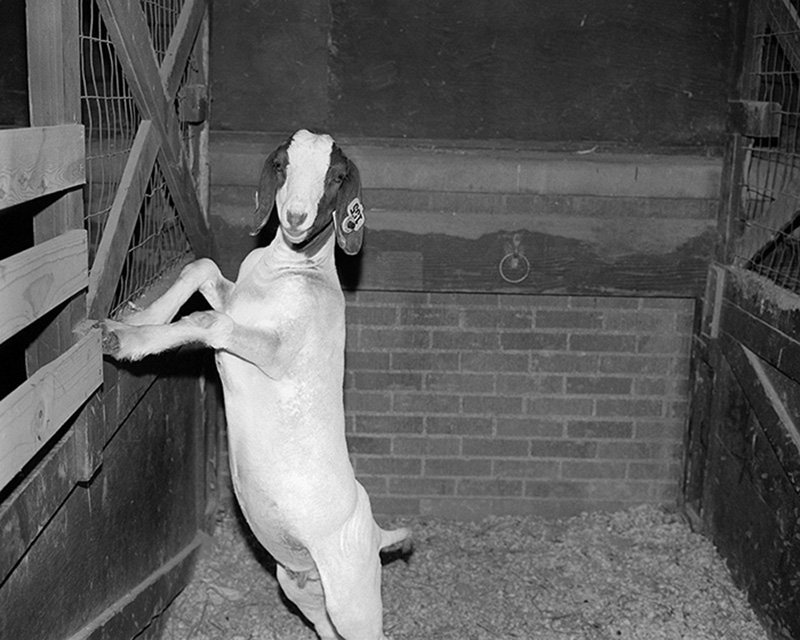
Was this the first time you had ever been to the fair?
This might have been the third time I had ever been. Growing up my parents really loathed the experience of the fair, so I just never went. I think the first time I went was with a girlfriend in 2013. I just remember people always getting wildly excited about the state fair every year, friends from the city, or suburbs, or wherever, and I was apathetic for a long time. People from rural communities plan family vacations around this thing. People spend the entire time living at the fair for two weeks. People sleep in RVs and campers on the fair grounds. That’s how big of a deal it is.
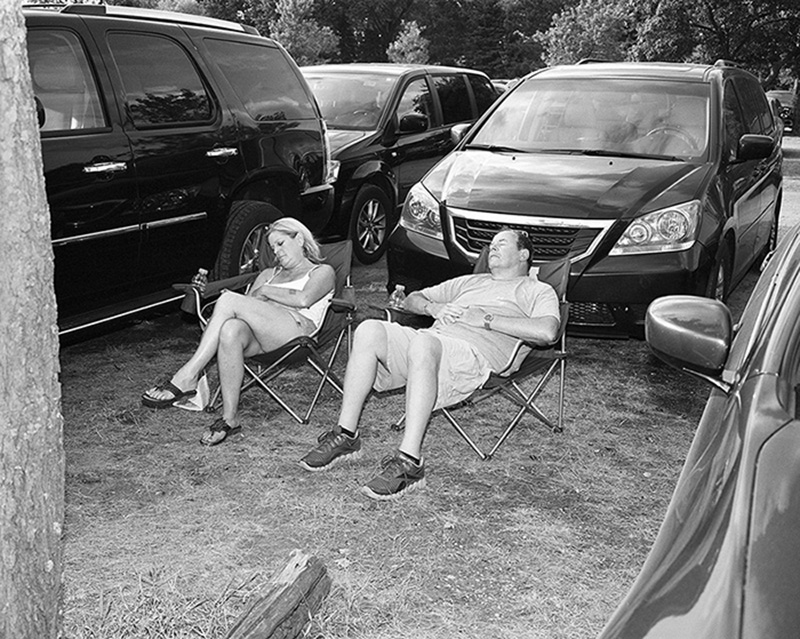
You attended the fair every day it ran, taking off work, skipping all responsibilities. What was your daily routine during the fair?
I took off work sometimes, maybe a couple of days. I would frequently cut out early or show up late. I had to make the time up and did, but there was a lot of running around. The fairgrounds would open really early, around 6:00 or 6:30, I would get there early in the day, take at least one photo and then go to work, come back later that night around 7 or so, shoot some more, go home, sleep. Wake up, do it again. I would invite my friends to come with. I just knew I needed to shoot and figured my friends might want to go to the state fair, if only to hang out and eat their share of fried food on a stick or Pronto Pups or cheese curds. My parents helped me out a bunch and watched my dog for a couple of days when I was running 18-hour days.
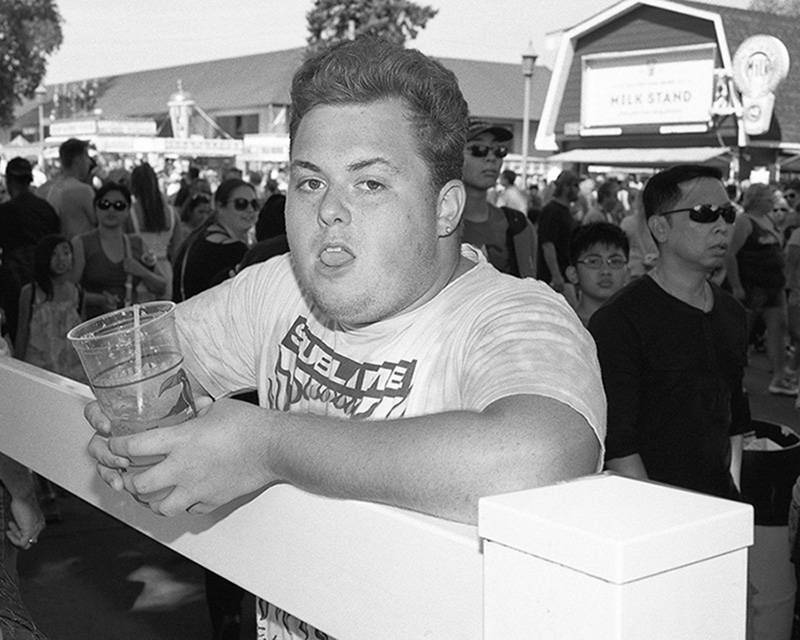
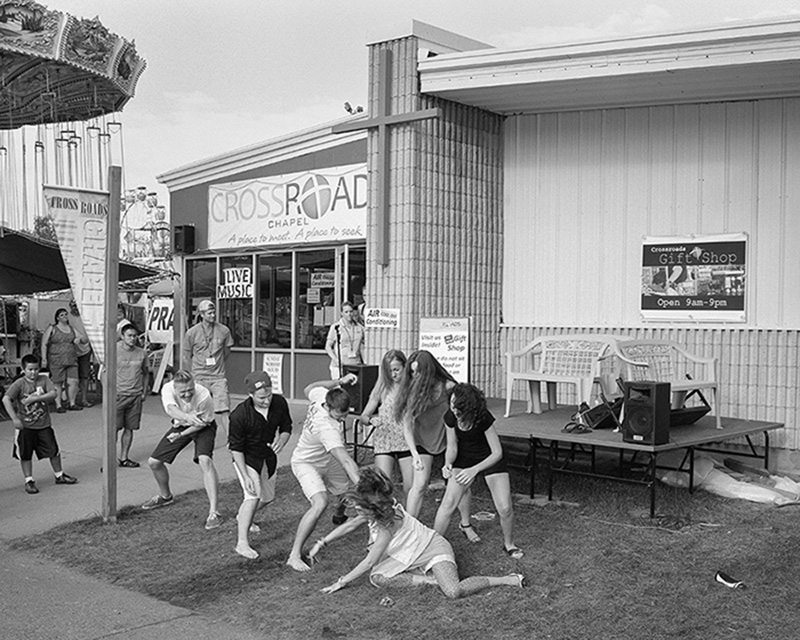
Explain the picture of kids fighting.
There is this church that has a building on the fair grounds that is always proselytizing. They’re not quite as extreme as WBC or any other really hateful group, but they’re Minnesotan about it, meaning they’re quiet and passive, but they let people know that they’re there. One day their youth group was reenacting the temptation of Satan and his demons and the saving powers of Jesus and how Jesus will protect you. I took two photos of the “play” they were putting on.
It was strange because I remember being really involved in church when I was younger and putting on a similar thing, not in a public space like they did, but feeling equally awkward and uncomfortable. It’s sort of paying homage to my high school church experience. I think our version was set to Bonnie Tyler’s “Total Eclipse of the Heart”.


Did you always have the idea of making this work into a book? How did you end up putting this all together?
I thought this might be a continuing project, I thought it might be 5-10 silver prints that I would present to Tom as a sort of “try out” to get into his darkroom and let him know that I’m serious about this work and that the technical side of the craft is important to me. Once I started developing the film, I started to see that there was a little bit more to the project. There were some strong photos, there were also some decent photos, but there were enough of both to put something together.
In 2015, I saw some friends get to New York Art Book Fair and the LA counterpart and I made it an objective that I would have something together by the time the 2016/2017 fairs came around. It became evident that this was the project to go there with.
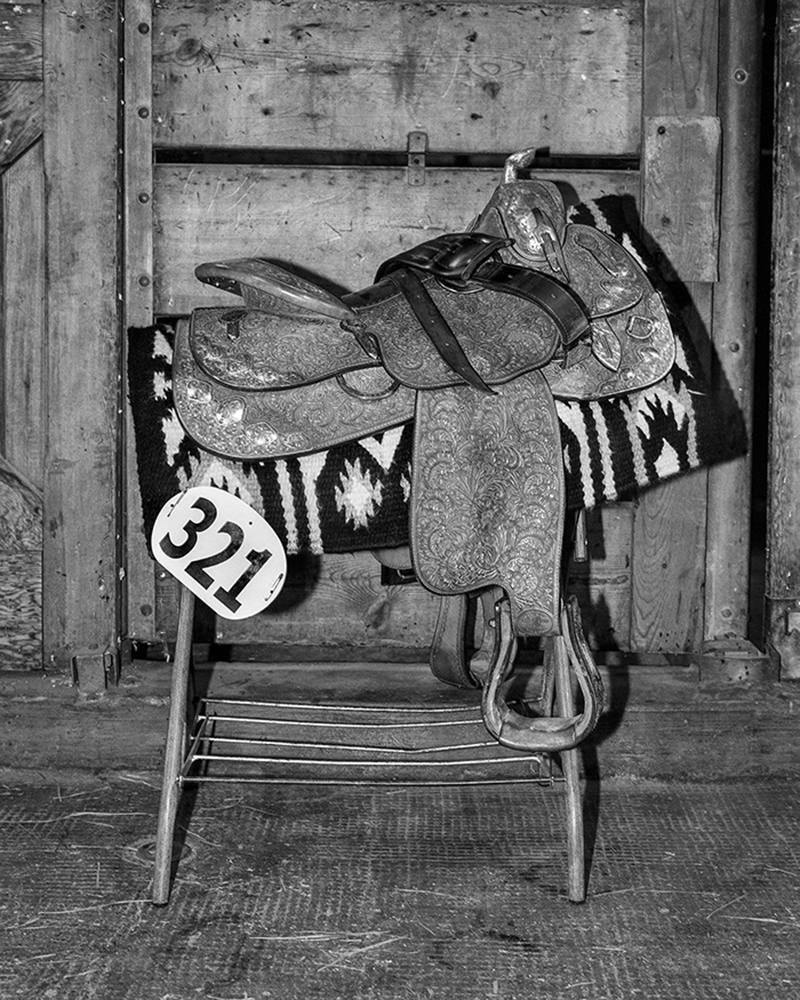

I think there is something deeper to this work aside from the “I went to the fair to take photos approach” How do these images differ from run-of-the-mill county fair photos that someone’s mom posts on Facebook?
I think there is a little bit of danger in classifying something as purely art or purely craft. I think one aspect is technical execution, but I think more specifically what separates this is that I was responding to what was in front of me. I went into this experience feeling pretty good about life, I was dating someone at the time, I had someone backing my vision with minimal pressure, I felt connected with people. And by the end I just felt really jaded and alone. That dating experience ended, I was perpetually exhausted for the next week or two, it was just a lot. This project affected me in a very weird way and I think that probably sounds really corny but you walk around and just watch people gorge themselves on fried food for a couple of weeks and screaming children and electric wheelchairs and crowds, a lot of crowds, and things feel really bleak by the end of it. And I think that’s what separates this from the regular family photos is if I just went one or two days, sure, I would have probably taken a good photo here or there, but the day in, day out exhaustion and bewilderment might come through in this collection. Or people might just see a book about the fair.

You were looking at Martin Parr’s The Last Resort as well as Alec Soth’s Songbook during the time you were working on this project. Being a photographer from Minnesota, do you feel it is inevitable to be compared to Alec Soth? Regardless of whether this parallel has a positive or negative connotation.
One thing to know about Minnesota: Minnesota loves Minnesota more than anyone else could love anything else. I don’t think anyone has compared me to Alec, ever, so I’ll let you know if that happens. I don’t think anyone is going to touch what he did to get where he is. I think to the passive photo enthusiast that is one of the easiest names to identify when it comes to art and photography in Minnesota and a parallel to draw to anyone who is trying to be “successful” (whatever that means). There is a wealth of quality artists and photographers from here, all doing different stuff. Christopher Selleck, Nate Grann, Carrie Thompson, Brad Ogbonna, Hillary Berg, Brian Lesteberg, Eric Carroll, Paul Shambroom, Beth Dow, Ethan Jones, Tom Arndt, Chris Faust, Ramon Muxter. If you ask me in 3 months I’m sure that list will change.
I do think it is important to note that there is definitely a different feel to Midwestern work. Or rather, as a Midwesterner, I am quick to identify with it as strangely introspective and self-critical.
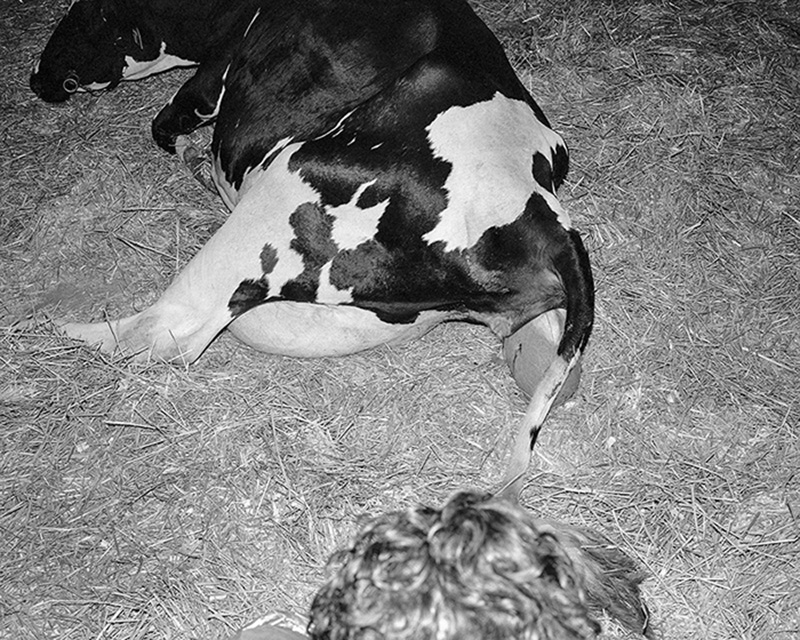
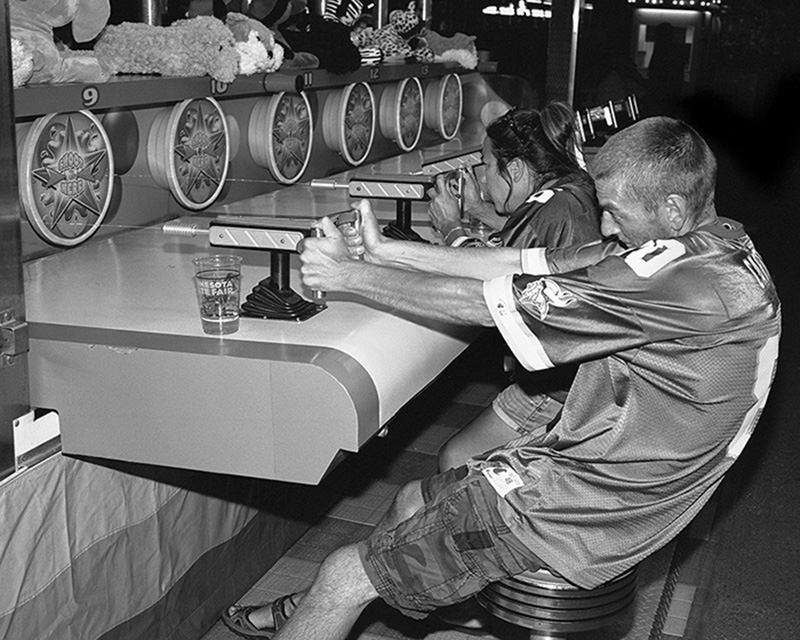
Do you think platforms such as Instagram and Tumblr are helping or hurting photography? How?
I’m not really an expert when it comes to sociological impacts of institutions on art. I think there is a lot of soft photography out there in general, and there always has been, it just has a platform now. There is an overabundance of misrepresentation, trends and homogenizing when it comes to popular photography. The fact that I can say “Tumblr photography” and you know exactly what I’m talking about isn’t really the issue. I think it’s cool because it’s simply commercial photography and people are finding out how to represent their lives in the same way that studio photographers use glue instead of milk for cereal advertisements.
In all seriousness though I think there are some real detriments to it, people are picking up cameras and trying to get famous or get a bunch of followers and it’s molding how they approach the craft and how they use the tool rather than exploring what it means to them. Working in a high school I saw kids identify quality of work with how many followers someone had, which is wildly untrue.
In the same breath I’ve used it to connect to other photographers, stay at their houses, make friends across the country and around the world. It’s pretty wild what has happened through social media. If you keep social media social I think it can be good; if you’re designing your life around it you should probably get a new hobby.
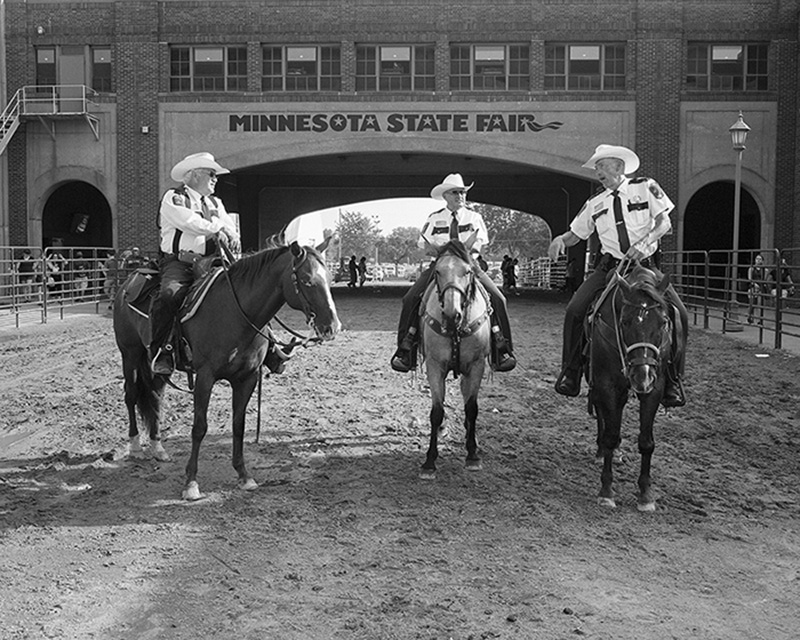

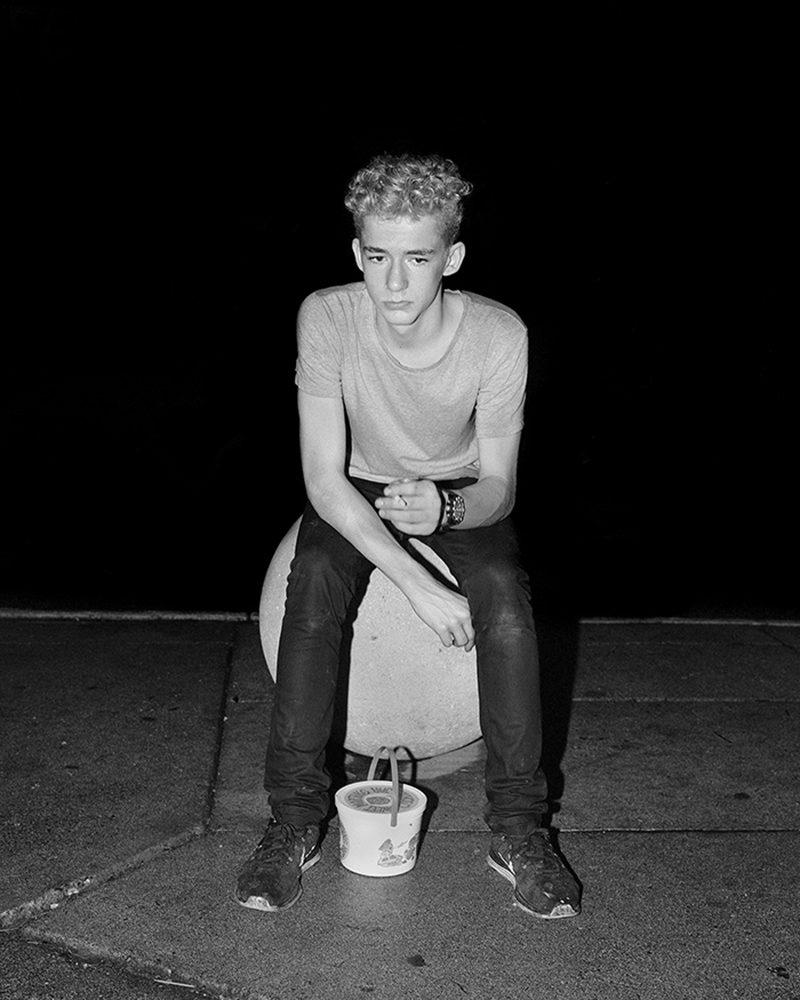
Check out more of Kevin’s work on his webesite. You can also buy the book here.